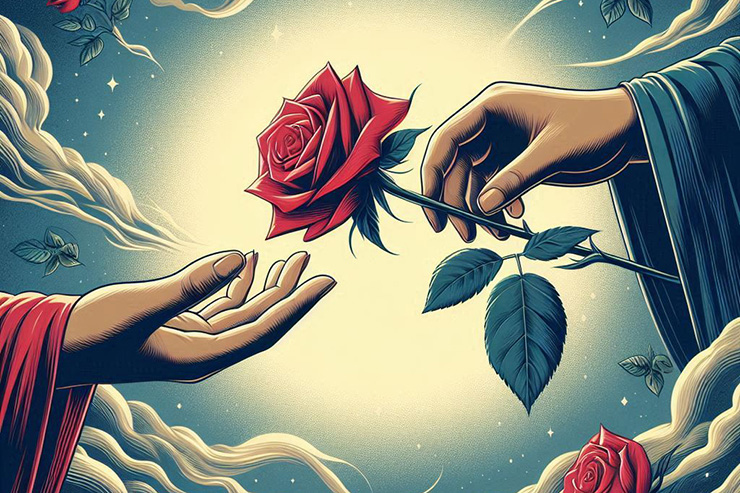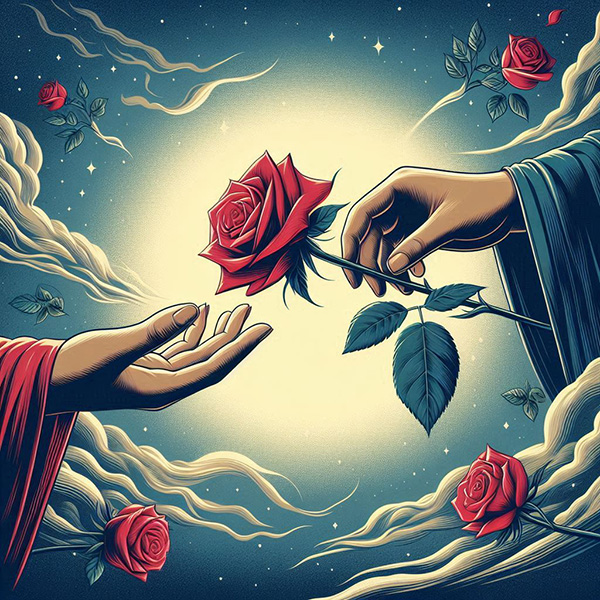

My dear old friend dug a root for me, said
Lafayette presented this very rose to her ancestor when the Frenchman returned to America
in 1825 on his triumphant farewell tour, and relays of our finest horses pulled his coach
from Vermont town to town and our citizens wined, dined, and danced with the aging hero. I imagine someone in his entourage had charge of the rose slips Lafayette handed out.
But my ancient rose dates from before written words, from a time when there was only story,
for it is told the Crusaders carried this red rose from Persia home with them to Europe —
its petals stanched bleeding—but only if you recited a verse:
Abek, Wabek, Fabek,
In Christ’s garden stand three red roses—
One for the good God, the other for God’s blood, The third for the angel Gabriel.
Blood, I pray you, cease to flow.
See my rose there in full bloom, the startling show stopper? It’s red and flat—shocking pink in today’s parlance.
Our forefathers and mothers favored a flat, open bloom. Perfect rosebuds are a Victorian fancy, more modern. The Apothecary Rose—that’s its name—its red turns
a glowery day or dark room light just as it did when first an artist painted its portrait on the altarpiece in Ghent. Before Europeans had Far Eastern spices,
they turned tons of Apothecary Rose petals
into perfumes, pomanders, rosewater, potions,
and marveled the rose’s petals, dried, stayed fragrant. American colonists shipped rose petals back to Europe. The Apothecary Rose is the Red Rose of Lancaster.
A story, a story: Eleanor of Aquitaine, jealous of King Henry’s love for fair Rosamund, laced a rosewater flavored cake
with poison. Greedy Rosamund ate the cake and died. This red, red rose grows in my garden—
And I, I am its guardian, keeper of its Vermont story.



